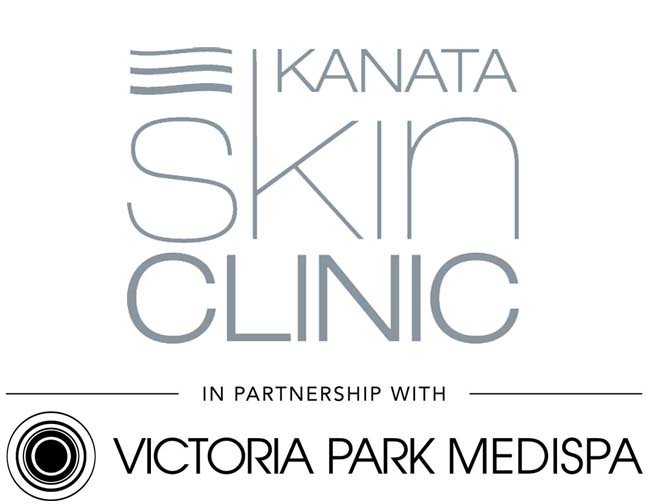Chemical Peels Ottawa
For Smooth, Healthy, Glowing Skin
Chemical peels are a tried and true skincare tool used by dermatologists to improve the appearance of your skin. Whether you’re looking to address a medical issue such as mild hyperpigmentation or fine lines and wrinkles, or are simply looking to give your skin a much-needed refresher, there’s a good reason many specialists are recommending chemical peels for such a wide variety of common skin problems.
We offer the Vivier line of peels.
Chemical Peels Explained:
How A Chemical Peel Works
Peels work by applying a chemical solution to the skin, composed of acids that vary depending on how aggressive of a treatment the patient requires. Superficial peels use mild formulas (such as alpha-hydroxy acid) to gently exfoliate the outermost layers of the skin. Medium and deep peels use phenol, trichloroacetic or glycolic acids to penetrate deeper and alleviate more persistent skin problems.
The chemical solution gently loosens and removes the older, surface layers of the skin. The skin that grows back will be smoother and younger-looking, leaving you with a fresh and healthy complexion. At the same time, vitamins and anti-oxidants are added to strengthen and protect the underlying layers of skin and stimulate your skin’s natural collagen production.
The Kanata Skin Clinic is one of the few clinics in Ottawa that offer the Vivier Peel™ and the Vivier Tx Jessner Plus™ Chemical Peels, both trusted world leaders in the development of gentle and highly effective peels. This gives you a more relaxing and enjoyable experience, while still delivering the glowing results our patients have come to expect.
What A Chemical Peel Treats
Chemical peels are designed to treat the effects of aging and exposure to the elements affecting the top layers of skin. A peel provides an even skin tone and smoother skin texture. Specifically, a chemical peel can be used to:
Reduce fine lines under the eyes and around the mouth
Treat wrinkles caused by sun damage and aging
Improve the appearance of mild scars
Reduce age spots, freckles and mild pigmentation
Calm red and irritated skin (rosacea)
Improve the overall look and feel of skin
Am I a good candidate for a chemical peel?
Chemical peels can be done on the face, neck or hands. Sagging skin, deep acne scarring, melasma and severe wrinkles do not respond well to chemical peels and are better addressed with alternative treatments.
Fair-skinned and light-haired patients are the ideal candidates for a chemical peel. If you have darker skin, you may also have good results, depending on the type of problem and the location of the treatment area. However, extra care must be taken if you have a darker complexion. If the chemical peel is too aggressive, it could result in uneven skin tones in darker skin.
To find out if a chemical peel is right for you, it is best to book a consultation with Dr. Hegmann and one of our qualified medical aestheticians. This will give them the opportunity to review your medical history and actually see what it is you are concerned about in order to make informed recommendations as to the best course of treatment.
What to Expect from a Chemical Peel:
Anticipated Results
After your peel, your skin should look smoother and younger, with fewer blemishes. You will likely notice improvements almost immediately, however, with a little patience and the proper aftercare, the results will keep getting better and better. The best results usually begin to show after five to seven days and can last for up to a year with a little maintenance.
Recovery and Aftercare
The recovery period for a chemical peel is very short and requires very little (if any) downtime. There are several things you can do to speed up the process and make the results last longer, including:
Treating your skin gently for the first 5 days
Taking extra care when the skin is wet
Wearing gentle, broad-spectrum SPF 30 sunscreen
Limiting your time outdoors for up to 30 days after your peel
Using unscented skincare and makeup products with soothing ingredients
Keeping your skincare routine simple and gentle during healing
There are also several aftercare “don’ts” that can slow down the healing process, or even cause irritation and infection in the weeks following your chemical peel. Avoiding certain behaviours can reduce these risks and optimize results. These include:
Don’t pick or pull if you experience flaking
Avoid using rough washcloths, facial scrubs or sonic cleansing brushes
Don’t over-moisturize
Avoid exfoliating with acids or enzymes
Don’t eat highly acidic foods
Avoid excessive sweating by limiting physical activity
Avoid retinol or other prescription retinoids.
Types of Chemical Peels:
Vivier Tx® Jessner Plus™ Peel
The Vivier Tx® Jessner Plus™ Peel is a unique professional skin resurfacing procedure that safely provides controlled exfoliation of damaged skin.
Offers a combination of anti-aging ingredients:
14% Resorcinol - an antiseptic used as a peeling agent
14% Lactic Acid - exfoliates the cells on the surface of the skin
14% Salicylic Acid - helps to exfoliate the skin cells, also has anti-irritant properties
Designer Peptides - helps to activate your own growth factors, while decreasing inflammation
Panthenol - a form of Vitamin B, has wound-healing and hydrating properties
The Skin Tx Jessner Plus™ Peel is safe, non-invasive and approved by Health Canada, when performed under the supervision of a doctor.
Vivier Peel™
The Vivier Peel™ is a gentle yet effective peel that helps brighten and tighten your skin, leaving you feeling radiant and glowing.
This is a professional facial treatment that contains unique ingredients which:
Provide a gentle exfoliation
Stimulate collagen formation
help reduce the appearance of fine lines and wrinkles
Smooth and soften your skin
Encourage cell turnover
Frequently Asked Questions
+ Does a peel hurt? Is it uncomfortable?
This depends on your individual pain tolerance. Expect a certain level of discomfort, especially if you are receiving more aggressive treatment. However, most people are surprised at how relaxing and comfortable their treatments are. In any case, the aesthetician will monitor your treatment and can neutralize it at any time if it becomes overly uncomfortable.
+ What will I look like right after the treatment?
If you've ever seen scary-looking post-peel photos where it looks like the patient's skin is falling off, it's understandable that you'd be hesitant to undergo a peel yourself. However, this rarely happens after a good peel anymore. You will leave your appointment with a clean, healthy glow; no one would know you just had a chemical peel.
You may find that your skin is more sensitive to the sun immediately after your appointment. Unscented, broad-spectrum sun lotion with at least SPF 30 can help protect your skin and avoid irritation during the first few hours and days.
+ Will I blister or peel a few days after the treatment?
Our peels are designed to be gentle, yet effective. Contrary to popular belief, it is possible to achieve excellent results without peeling at all! However, it ultimately depends on the strength of your treatment and how well your skin responds to it.
If you have had a stronger treatment, you may experience some light peeling, much like you would if you had a mild sunburn. Patients with sensitive skin are more likely to experience mild peeling or, in rare cases, blistering.
+ How many treatments will I need?
If you are simply looking for a healthy glow, one treatment may be enough. For more aggressive problems, several treatments are generally required in order to achieve the greatest benefits. Expect three to six treatments, spaced two weeks to a month apart.
If you require more aggressive treatment, you will likely need to schedule a higher number of appointments, less frequently, to allow your skin to heal properly between sessions. After that, you may require maintenance treatments now and then to maintain results.
+ How long does the treatment take?
Depending on the size of the treatment area, a single treatment can take anywhere from 10 minutes to an hour. For a full face, a superficial (mild) chemical peel generally takes around 30 minutes. Spot treatments on the neck and hands tend not to take as long.
+ Is there any downtime? Will I have to take time off work?
Recovery time varies depending on which chemical peel you receive; however, patients usually feel fine to resume normal activities immediately after their treatment. This is why chemical peels are such a popular lunch hour activity!
If you have sensitive skin, you may experience some redness and irritation. This should subside after 12 to 24 hours and can be alleviated more quickly with a cool compress. After 12 hours, you can reduce the appearance of any residual redness with gentle makeup – just remember to clean your brushes thoroughly to avoid further irritation!
+ How long does it take to see results and how long do they last?
You should see significant improvements immediately following your treatment; however, the best results normally begin to show around a week after your peel. The results are semi-permanent and can last for up to a year with the proper aftercare and maintenance. To extend the longevity of your results, you may decide to go back in for touch-up sessions every now and again.
+ Is a chemical peel safe? Are there any risks or side effects?
Like any medical procedure, chemical peels come with certain risks and potential side effects. However, they are generally perfectly safe when applied by a licensed professional.
If you have suffered from cold sores, keloids or any other unusual scarring tendencies, there could be a risk of reoccurrence. During your consultation, ensure that you inform Dr. Hegmann of all past issues of this nature. In these cases, your physician may prescribe medication to reduce the risk of a flare-up.
In extremely rare cases, a chemical peel can result in infection or scarring. Following Dr. Hegmann’s aftercare instructions and checking in if you are experiencing any abnormal side effects will all but eliminate this risk.




